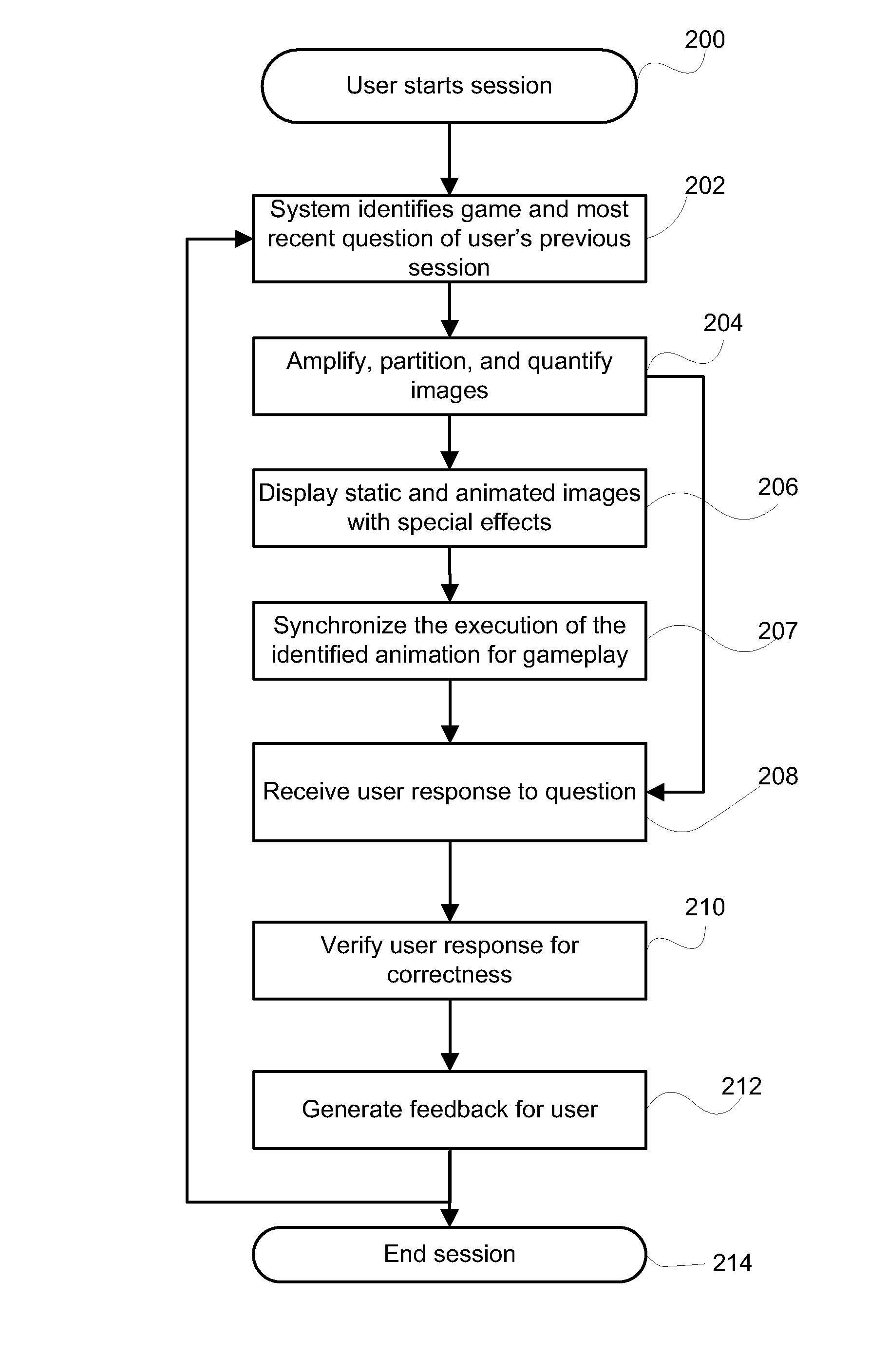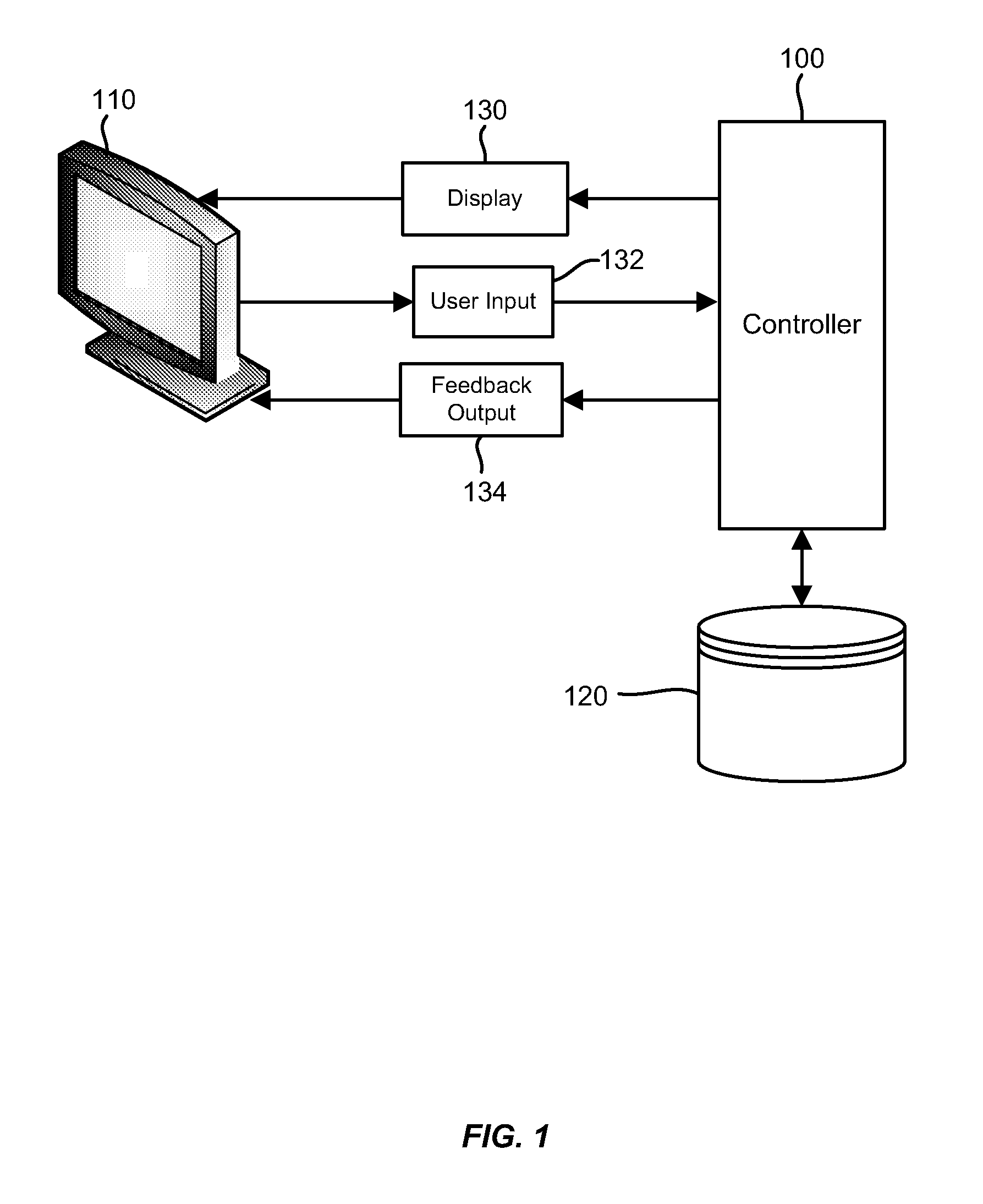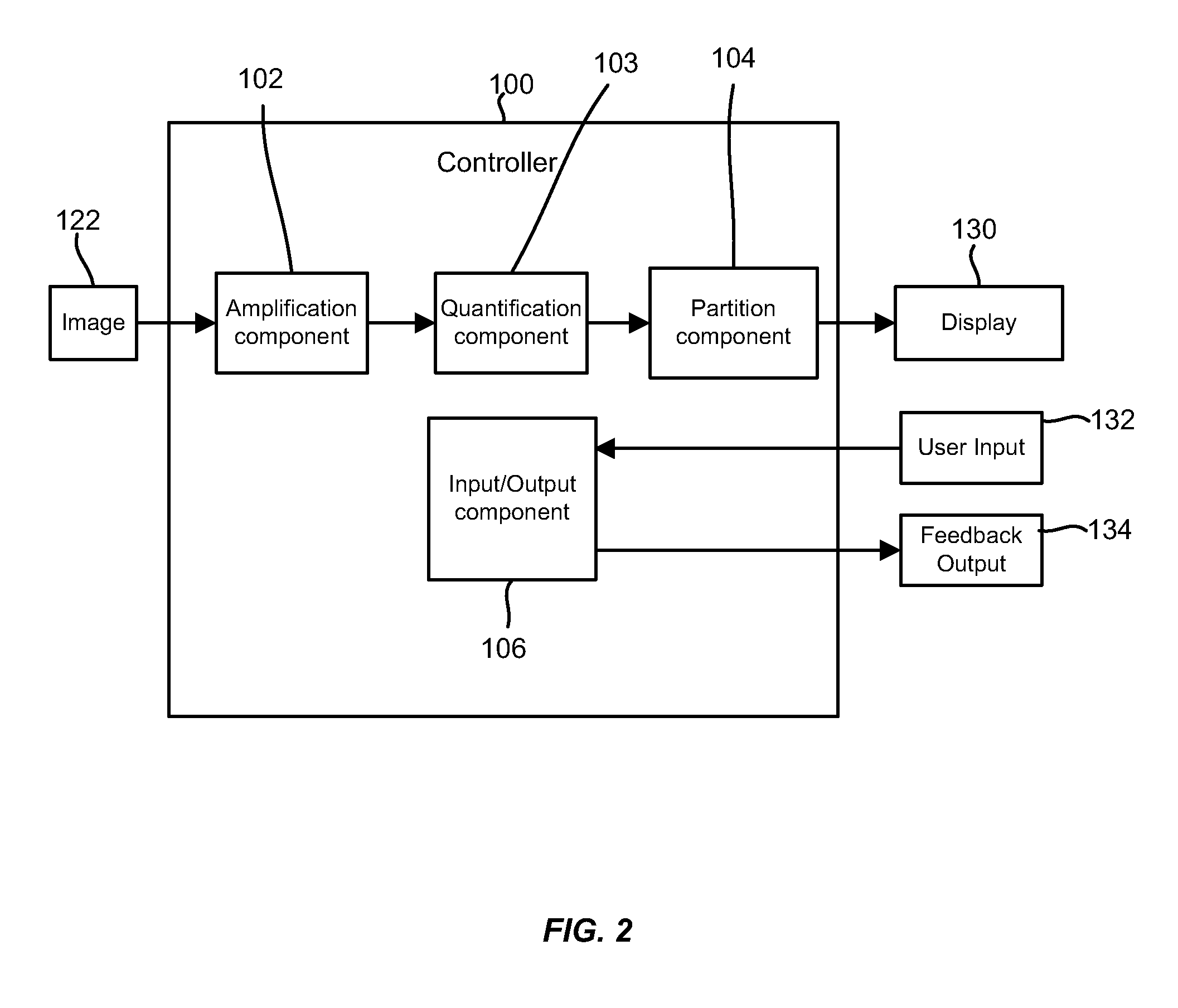System and method for teaching social skills, social thinking, and social awareness
a social awareness and social thinking technology, applied in the field of social awareness and social skills teaching, can solve problems such as intellectualization and generalization for everyday li
- Summary
- Abstract
- Description
- Claims
- Application Information
AI Technical Summary
Benefits of technology
Problems solved by technology
Method used
Image
Examples
Embodiment Construction
[0033]The present invention provides a system and method for teaching social skills serves as a learning tool for individuals with autism or other developmental disorders. The system and method serves as a learning tool for individuals with autism or other developmental disorders. In one exemplary embodiment, the learning tool is an interactive computer game introducing elements of improvisation and ambiguity into the target social interactions in the virtual environment / situation. The instructional method employed by the present invention facilitates generalization by bridging his / her level of mastery and / or comfort from a starting point in a comfortable “more controlled” virtual setting, and through game functions, extending by stages further and further towards the “less controlled” real life settings. In one exemplary embodiment, the present invention provides a game that focuses on an awareness of the physical anatomical movements which encourage students to accomplish some lev...
PUM
 Login to View More
Login to View More Abstract
Description
Claims
Application Information
 Login to View More
Login to View More - R&D
- Intellectual Property
- Life Sciences
- Materials
- Tech Scout
- Unparalleled Data Quality
- Higher Quality Content
- 60% Fewer Hallucinations
Browse by: Latest US Patents, China's latest patents, Technical Efficacy Thesaurus, Application Domain, Technology Topic, Popular Technical Reports.
© 2025 PatSnap. All rights reserved.Legal|Privacy policy|Modern Slavery Act Transparency Statement|Sitemap|About US| Contact US: help@patsnap.com



